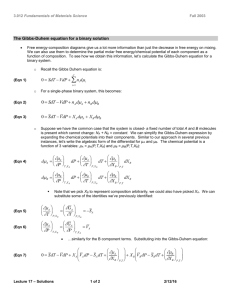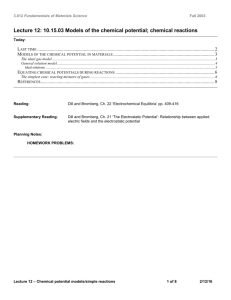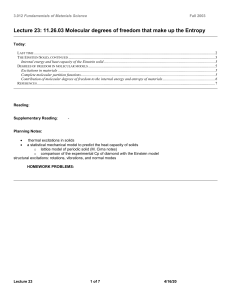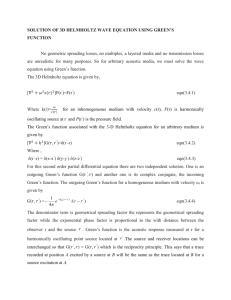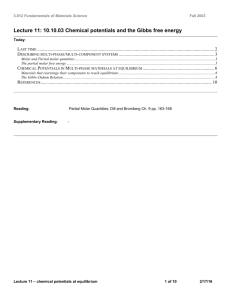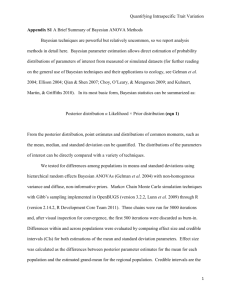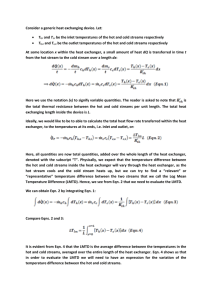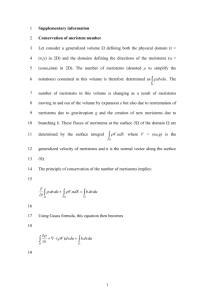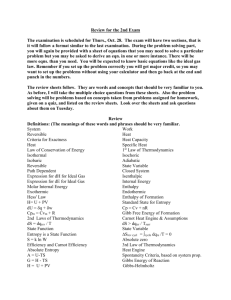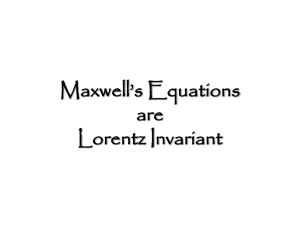3.012 lect17
advertisement
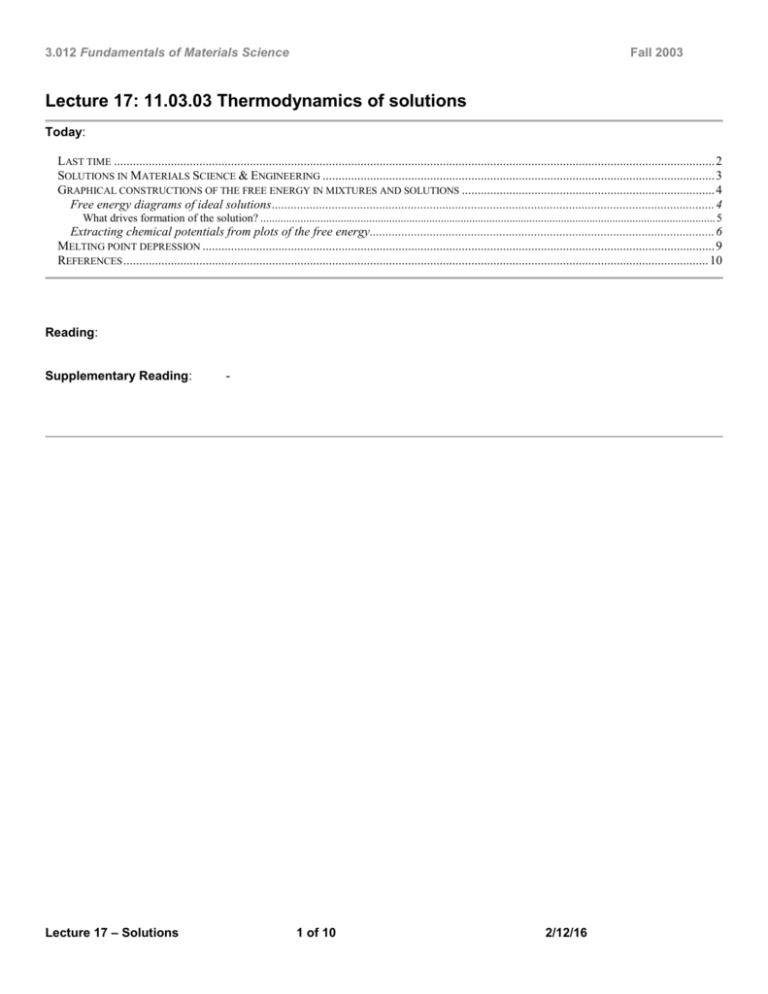
3.012 Fundamentals of Materials Science Fall 2003 Lecture 17: 11.03.03 Thermodynamics of solutions Today: LAST TIME .............................................................................................................................................................................................. 2 SOLUTIONS IN MATERIALS SCIENCE & ENGINEERING ............................................................................................................................ 3 GRAPHICAL CONSTRUCTIONS OF THE FREE ENERGY IN MIXTURES AND SOLUTIONS ................................................................................ 4 Free energy diagrams of ideal solutions ............................................................................................................................................ 4 What drives formation of the solution? ............................................................................................................................................................... 5 Extracting chemical potentials from plots of the free energy............................................................................................................. 6 MELTING POINT DEPRESSION .................................................................................................................................................................. 9 REFERENCES ......................................................................................................................................................................................... 10 Reading: Supplementary Reading: Lecture 17 – Solutions - 1 of 10 2/12/16 3.012 Fundamentals of Materials Science Fall 2003 Last time Lecture 17 – Solutions 2 of 10 2/12/16 3.012 Fundamentals of Materials Science Fall 2003 Solutions in Materials Science & Engineering The formation of solutions and alloys is ubiquitous in materials science. Solutions can consist of solids dissolved in a solvent, or one solid dissolved in another (solid solutions). Often, only a small amount of a solute is added to the ‘solvent’ to obtain dramatic changes in properties of the materials. Some examples of this important category of materials include: o Examples can be drawn from the mundane to the exotic: ‘solvent’ Material Brass Cu ‘solute’ Effect of solute Zn Lecture 17 – Solutions 3 of 10 2/12/16 applications 3.012 Fundamentals of Materials Science Fall 2003 Graphical constructions of the free energy in mixtures and solutions In addition to mapping out stable phases for single-component systems, phase diagrams can also be sued to chart stable phases as a function of temperature (or pressure) vs. composition for binary (2-component) or ternary (3-component) systems. In order to understand how the phase boundaries in systems of more than one component arise, we will first discuss another useful graphical constructions: free energy vs. composition diagrams. Free energy diagrams of ideal solutions Earlier we introduced the general solution model for the chemical potential: igeneral (T,P, Xi ) i,0 (T,P) RT log ai (Eqn 1) When the activities of the components are equal to their compositions, the solution is ideal: iideal (T,P, X i ) i,0 (T,P) RT log X i (Eqn 2) Knowing the chemical potentials of the components, we can determine the total free energy of the solution. What does a plot of the total free energy for a binary ideal solution of two components A and B look like vs. the composition XB? o The total molar free energy for the solution is: ideal Gtotal (T,P, X B ) 1 X B A X B B (Eqn 3) ideal Gtotal (T,P, X B ) 1 X B A,0 (T,P) RT log 1 X B X B B,0 (T,P) RT log X B o All we need to plot the free energy for a given temperature and pressure is the standard state chemical potential of each component. (For many materials of interest, this data is available in databases and published tables- more on this later.) Lecture 17 – Solutions Let’s just look at what the free energy curve looks like for a hypothetical A/B solution at a fixed pressure that has the following parameters: µA,0 = -3.0 KJ/mole µB,0 = -1.0 KJ/mole T = 300K 4 of 10 2/12/16 3.012 Fundamentals of Materials Science Fall 2003 Gtotal ideal solution model 0 0.2 0.4 0.6 0.8 1 XB …this plot was generated using the ideal solution free energy equation given above. Ideal solutions always give curves with this qualitative nature; the depth of the “smile” and its tilt are controlled by the specific values of T and the standard state chemical potentials of the pure components. What drives formation of the solution? o The free energy diagram allows us to readily determine what a system gains (thermodynamically) by forming a solution. Suppose I have a Ge-Si solid solution (a useful semicronductor material), which behaves very nearly as an ideal solution. Si o Si-Ge solid solution Before formation of the solution, (i.e., imagine a crystal of pure Si bonded to a crystal of pure Ge) the molar free energy of the system is simply the sum of the free energies per mole of each pure component multiplied the total mole fraction Gtotal X A GAo X B GBo (Eqn 4) Ge Where the superscripts indicate the partial molar free energies of the two pure components in their standard states. The free energy as a function of XB plots simply as a straight line between the molar free energies of the components, as shown below. two pure Lecture 17 – Solutions 5 of 10 2/12/16 3.012 Fundamentals of Materials Science Fall 2003 (© W.C. Carter 2002) Comparing the straight-line free energy curve of the ‘unmixed’ sample with the free energy once they dissolve in one another to form a solution, we see that the free energy of the solution is significantly lower (and hence more stable) at equilibrium. The G occurring when the heterogeneous system becomes a solution is often called the free energy of mixing, Gmix. Extracting chemical potentials from plots of the free energy We can learn more from free energy diagrams than the free energy change on mixing. The diagram also provides a convenient graphical means to determine chemical potentials/partial molar free energies of the components as a function of compositon. To see how this is done, we start by writing the molar free energy of the solution: C G i n i A n A B n B (Eqn 5) i1 G A X A B X B (Eqn 6) (Eqn 7) o What is the differential of the partial molar free energy? dG A dX A B dX B A dX A B dX A A B dX A (Eqn 8) …where we have used the fact that dXB = -dXA. Re-arranging we get two useful relationships: G A B X A T ,P 17 – Solutions Lecture similarly, if we write the differential of the molar free energy in terms dXB we get: 6 of 10 2/12/16 3.012 Fundamentals of Materials Science Fall 2003 G B A X B T ,P (Eqn 9) If we combine (Eqn 8) and (Eqn 9) with (Eqn 6), we finally get the expressions we’re after: (Eqn 10) G A G X B X B T ,P (Eqn 11) G B G X A X A T ,P These two equations tell us how to determine the chemical potentials from free energy diagrams. Returning to our diagram: (© W.C. Carter 20021) If we re-arrange (Eqn 10): G G A X B X B T ,P (Eqn 12) Lecture 17 – Solutions 7 of 10 2/12/16 3.012 Fundamentals of Materials Science o Fall 2003 …which is of the form y = mx + b: it is the equation of the tangent to the molar free energy curve. This equation tells us that the y-intercept of the tangent (at XB = 0) is equal to the chemical potential of A. Similarly, we can show that the intercept at XB = 1 provides the chemical potential of B in the solution. Thus, the free energy diagram gives us a convenient way to determine chemical potentials as a function of the composition of the solution. Lecture 17 – Solutions 8 of 10 2/12/16 3.012 Fundamentals of Materials Science Fall 2003 Melting point depression You probably know that roads and sidewalks are salted in winter to help prevent ice buildup and subsequent traffic accidents. Thermodynamics provides the explanation for this phenomenon. Qualitatively: Dill p. 288 (© W.C. Carter 2002, p. 182) Lecture 17 – Solutions 9 of 10 2/12/16 3.012 Fundamentals of Materials Science Fall 2003 References 1. Carter, W. C. 3.00 Thermodynamics of Materials Lecture Notes http://pruffle.mit.edu/3.00/ (2002). Lecture 17 – Solutions 10 of 10 2/12/16
